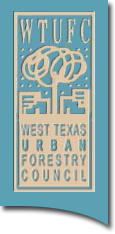
Site Selection Questions
- Purpose: Why am I planting this tree? Is it for shade, fruit, flowers, etc?
- Size: How big is my tree going to get?
- Utilities: Where are my overhead and underground utilities located? Call before you dig – 1-800-454-6005.
- Views: Am I blocking a desirable view? Do I want to hide a view?
- Area: How much room do I have for a tree?
- Water: Where is my nearest water source?
- Safety: Will this tree create a hazardous situation, such as blocking the line of sight in a traffic situation?
- Sidewalks & Foundations: Will the tree roots cause problems as the tree matures?
- Energy: Will my tree block my or my neighbor’s solar access as it grows larger?
Selection at the Nursery
Be sure you have selected a healthy tree free of insects and disease. The main trunk and branches should not have numerous wounds, cracks, discolored bark or oozing sap.
Container grown trees can become pot or root bound if they are left in the same container too long. If you suspect a problem, ask the nurseryman to show you the root system. Make sure the tree you select is absent of girdling or circling roots.
The root ball of a B&B (ball & burlap) tree should be covered with soil or mulch, keeping the roots moist. The root ball should be solid, not broken, and the stem should not move independently of the root ball.
Be sure the tree you select is recommended for this area. If possible, select a tree that has been locally grown or grown in a climate very similar to West Texas.
Know the form of the tree you’re selecting. Most juvenile trees should have a strong central leader with well-spaced lateral branches. Don’t pick a tree which has been topped (indiscriminate removal of major limbs) at the growers or nursery. It may look good now but will later prove to be a maintenance nightmare. Avoid trees with co-dominant stems or double leaders.
The tree you select should be able to stand erect on its own. If the tree is tightly tied to a pole or stake, more likely than not it has formed weak wood and will need additional support after planting.
Transporting: Self Serve or Delivered – Follow These Rules
- Never carry the tree by the trunk. Always support the root ball.
- If transporting the tree home in an open-air situation always wrap the crown of the tree with a blanket or tarp. This prevents drying, especially if the tree is leafed out or an evergreen.
- Store the tree in a shady place, keeping the roots moist until you are ready to plant. Plant the tree As Soon As Possible.
Steps to planting your tree

Step 1. Select your site. (See site selection questions)
Step 2. Loosen the soil 3 to 5 times the diameter of the root ball to a depth of 8 to 12 inches.
Step 3. Dig a hole in the center of the loosened soil, making the hole at least twice as wide as the root ball, but no deeper than the root ball. The side of the hole should slant with the top wider than the bottom.
Step 4. Carefully place the tree in the center of the hole, making sure it is plumb and the top of the root ball is at ground level.
Step 5. Be sure to remove all containers, wire, burlap and string before backfilling. Check for circling or girdling roots. Root prune and gently tease the roots if needed.
Step 6. Backfill with the original soil — do not add soil amendments. On sites where there is very little soil remaining after removing the large rocks, match the backfill soil as closely as possible to the original in texture and content.
Step 7. Backfill the hole one third to one half, adding water in order to settle the soil and remove air pockets. Repeat the process until the top of the root ball and backfill soil are all at even grade. Use the excess soil to form a watering basin about 4 inches high around the planting hole.
Step 8. Staking is not necessary unless the root ball is not large enough to support the tree or if high winds are a problem. If you must stake a tree, use 2 to 3 stakes placed equidistant around the tree. Make sure you do not drive the stake through the root ball. Secure the tree to the stake with a wide band of material such as the webbing used in lawn chairs, old bicycle tire tubes or similar material. DO NOT USE WIRE! REMEMBER, STAKING IS USED TO KEEP THE TREE FROM FALLING OVER, NOT TO KEEP THE TREE STANDING UP. Do not support the tree so rigidly that it cannot sway in the wind.
Step 9. Add a layer of mulch around the planting area. A 3 to 4 inch thick layer will help conserve moisture, inhibit weed growth and help keep the soil temperatures at a more constant level. Organic mulches are preferable, because they return nutrients to the soil as they decompose.

